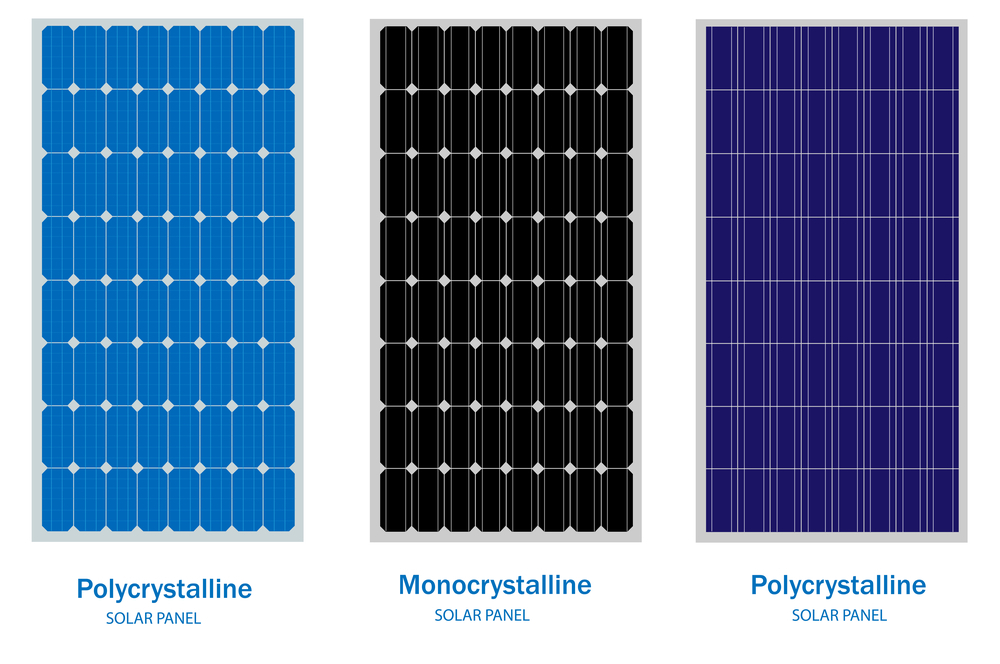
Solar energy is rapidly gaining popularity in Pakistan as a sustainable alternative to conventional power sources. The choice of solar panels plays a pivotal role in harnessing this energy efficiently. This article provides a practical analysis of the various types of solar panels in Pakistan, aiming to guide consumers towards informed decisions for a more sustainable future.
Types of Solar Panels in Pakistan: Understanding the Basics
Before delving into the types, let’s grasp the fundamentals. Solar panels, also known as photovoltaic (PV) panels, convert sunlight into electricity
through the photovoltaic effect. In Pakistan, where sunlight is abundant, harnessing solar energy is an attractive prospect for both residential and commercial purposes.
Monocrystalline Solar Panels: Efficiency in a Compact Form
Monocrystalline solar panels are known for their high efficiency and sleek design. Composed of single-crystal silicon, these panels have a uniform and smooth appearance, making them aesthetically pleasing. In the Pakistani context, where space may be a constraint, monocrystalline panels prove beneficial due to their compactness and ability to generate more power per square foot.
Polycrystalline Solar Panels: A Cost-Effective Option
Polycrystalline solar panels are an economical choice for those looking to harness solar solutions without breaking the bank. These panels are made from multiple silicon crystals, offering a more cost-effective manufacturing process. Although they are slightly less efficient than monocrystalline panels, polycrystalline panels are still a viable option for those seeking an affordable and sustainable energy solution in Pakistan.
Thin-Film Solar Panels: Flexibility and Adaptability
Thin-film solar panels are gaining popularity due to their flexibility and adaptability. Made from various materials, including amorphous silicon, cadmium telluride, and copper indium gallium selenide, these panels are lightweight and can be integrated into a variety of surfaces. In Pakistan, where architectural aesthetics matter, thin-film solar panels provide a versatile option for seamlessly incorporating solar technology into buildings.
Bifacial Solar Panels: Maximizing Sunlight Absorption
Bifacial solar panels, designed to capture sunlight from both the front and rear sides, have become an intriguing option in the solar market. In the context of Pakistan’s sunny climate, these panels can capitalize on sunlight reflected from surfaces, increasing overall energy production. This innovative design ensures that energy generation is optimized, making bifacial panels a compelling choice for those looking to maximize efficiency in their solar setup.
Solar Panel Efficiency: Key Considerations for Pakistan
When evaluating solar panels, understanding efficiency is crucial. Efficiency refers to the percentage of sunlight that a solar panel can convert into electricity. In the Pakistani context, where sunlight is abundant, opting for higher efficiency panels becomes imperative for maximizing energy production. Monocrystalline panels typically lead in efficiency, making them suitable for locations with high solar potential.
Environmental Impact: Embracing Green Energy Practices
The environmental impact of solar panels is a significant consideration for those looking to adopt sustainable energy practices. Fortunately, all types of solar panels contribute to reducing carbon emissions and reliance on fossil fuels. In Pakistan, where environmental concerns are on the rise, choosing solar panels aligns with the global shift towards greener energy solutions.
Factors Influencing Solar Panel Selection in Pakistan
Several factors should influence the selection of solar panels in Pakistan. The geographic location, available space, budget constraints, and energy requirements are crucial considerations. Additionally, understanding the warranty, durability, and maintenance requirements of each panel type is essential for long-term sustainability.
Making the Right Choice: Tailoring Solar Solutions to Pakistani Needs
In conclusion, the choice of solar panels in Pakistan is not a one-size-fits-all decision. Each type has its advantages and considerations, catering to different needs and preferences. Monocrystalline panels offer high efficiency in a compact form, polycrystalline panels provide a cost-effective option, thin-film panels offer flexibility, and bifacial panels maximize sunlight absorption.
Before making a decision, it’s advisable to consult with solar energy experts, consider the specific environmental conditions of the location, and assess the long-term benefits of each panel type. Ultimately, the goal is to harness solar energy effectively, contributing to a sustainable and eco-friendly energy landscape in Pakistan.
Embracing Solar Power: A Step Towards a Sustainable Future
As Pakistan strives towards a more sustainable energy future, embracing solar power is a significant step in the right direction. The diverse options in solar panels allow consumers to tailor their choices based on efficiency, budget, and environmental considerations. By making informed decisions, individuals and businesses can contribute to reducing the carbon footprint and securing a cleaner, greener future for Pakistan.






